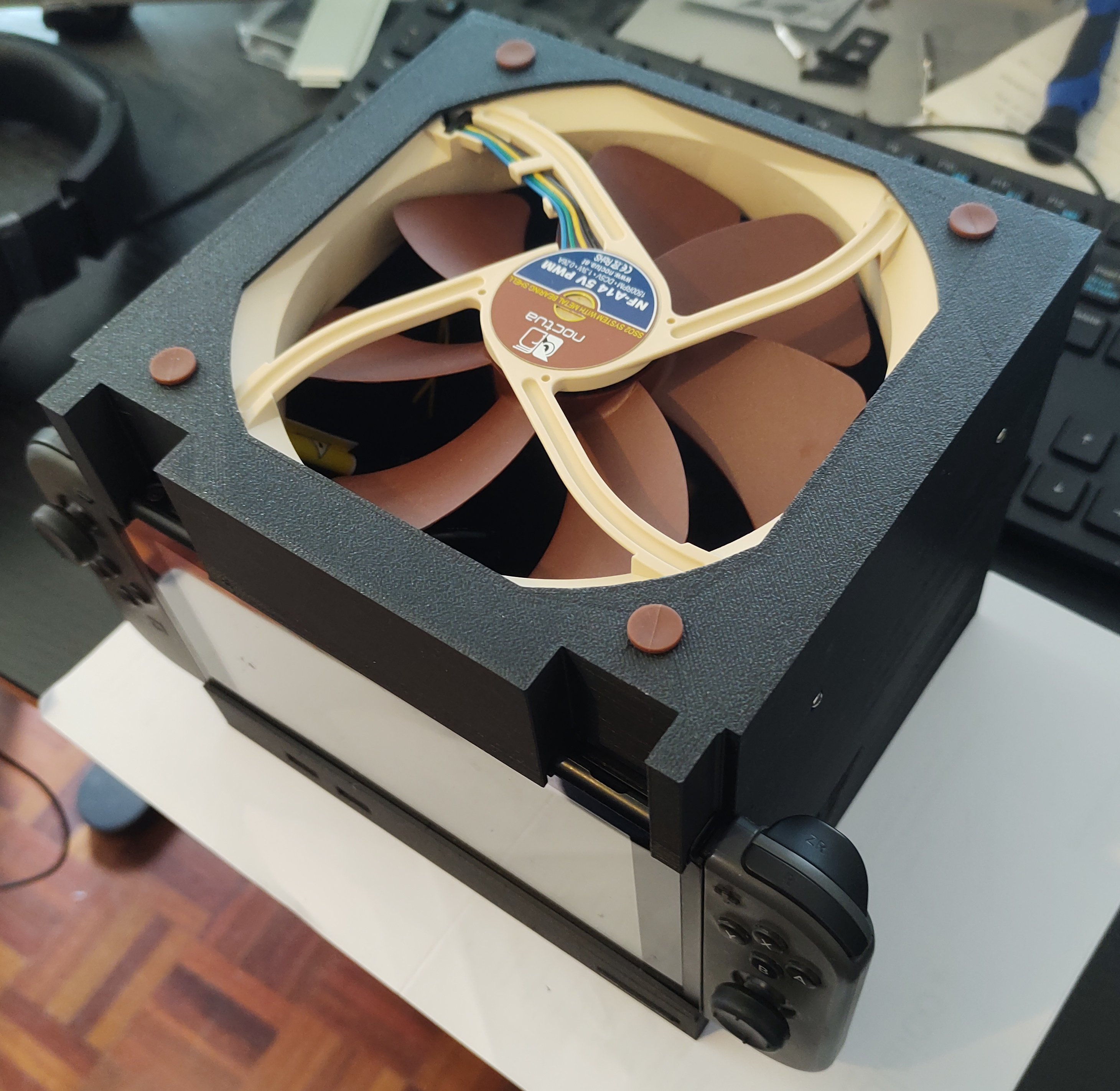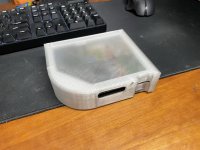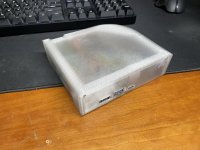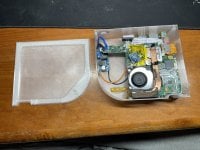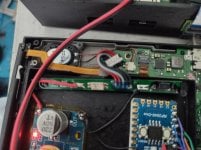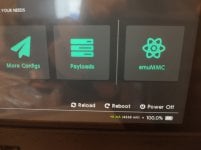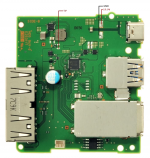Battery-less switch. Another step in my Consolize project.
In my quest to 'consolize' a switch into a Switchn't I wanted to remove the requirement for a battery.
Not much has been done to figure this out but I did find a thread on shmups in which user fwannmacher had over time figured it out after their battery failed.
First step, there are two test points next to the battery connector (on V1 and V2 switches, yet to confirm lite or oled) that are for the Sense line and GND. Putting a 10k ohm resistor across those pads makes the switch think the battery is fully charged, and will no longer try to charge it.
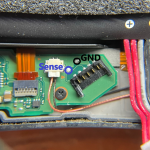

Next step, the switch requires voltage into the batt circuit or it will not turn on. A DC to DC buck converter from the 15V rail on the switch dock motherboard is a perfect solution for this.
Before connecting the buck converter to the battery input on the switch motherboard, I set its output voltage to 4.22v on my digital multimeter and then connected the output wires to the switches battery input.

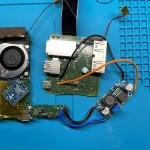
Now with buck voltage output at 4.22v on meter I then dialed it in to 4320mv in Hekate (4.30v on meter), hekate has battery info under Console Info/Battery.
This screen unfortunately doesn't auto refresh, so I was making very minute adjustments on the buck converters adjustment screw, then closing and reopening the battery screen to check the new value.
(I got the value of 4320mv from a second fully charged switch I had on hand, but I recommend you check what your console is before beginning modification)

With all this complete the switch now boots completely without a battery, both into OFW and CFW.
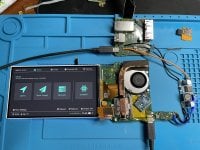
Thanks to fwannmacher for their work. I just wanted to do a complete writeup thats a little easier to follow for people in the future and hopefully extending the lifespan of some switches.
Not much has been done to figure this out but I did find a thread on shmups in which user fwannmacher had over time figured it out after their battery failed.
First step, there are two test points next to the battery connector (on V1 and V2 switches, yet to confirm lite or oled) that are for the Sense line and GND. Putting a 10k ohm resistor across those pads makes the switch think the battery is fully charged, and will no longer try to charge it.


Next step, the switch requires voltage into the batt circuit or it will not turn on. A DC to DC buck converter from the 15V rail on the switch dock motherboard is a perfect solution for this.
Before connecting the buck converter to the battery input on the switch motherboard, I set its output voltage to 4.22v on my digital multimeter and then connected the output wires to the switches battery input.


Now with buck voltage output at 4.22v on meter I then dialed it in to 4320mv in Hekate (4.30v on meter), hekate has battery info under Console Info/Battery.
This screen unfortunately doesn't auto refresh, so I was making very minute adjustments on the buck converters adjustment screw, then closing and reopening the battery screen to check the new value.
(I got the value of 4320mv from a second fully charged switch I had on hand, but I recommend you check what your console is before beginning modification)

With all this complete the switch now boots completely without a battery, both into OFW and CFW.

Thanks to fwannmacher for their work. I just wanted to do a complete writeup thats a little easier to follow for people in the future and hopefully extending the lifespan of some switches.




